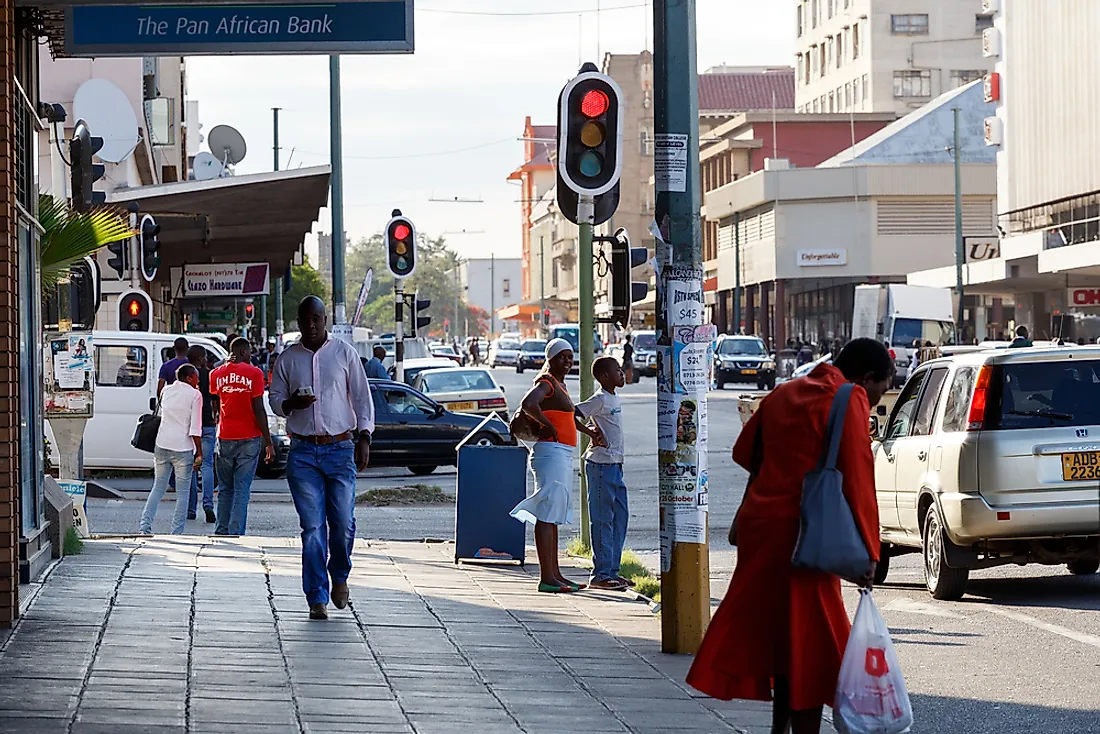What Is The Ethnic Composition Of Zimbabwe?

The Republic of Zimbabwe is a sovereign state in southern Africa. Its largest and capital city is Harare. Zimbabwe is a former British colony and was a popular destination for British immigrants during the colonial period due to its vast fertile lands for large scale farming. It became a self-governing British territory known as Southern Rhodesia in the early 1920s before the white minority declared independence from the British government in 1965. Soon after, black nationalists waged war against the white minority. After 15 years of guerilla fighting, the differing parties settled on a peace agreement that established the sovereignty of the country in April 1980.
Demographics Of Zimbabwe
As of 2019, the population of Zimbabwe was estimated at 14.6 million, a substantial increase from 14 million in 2013. In the 20th century, the country experienced significant growth in population due to falling death rates and high birth rates. However, declining living standards and high prevalence of HIV/ AIDS between 1991 and 2010 led to an increased death rate of about 27 per 1000.
Ethnic Groups
About 99.6% of the population in Zimbabwe is of African origin. White Zimbabweans of European ancestry form the largest part of the minority although their population has been declining since independence. The black majority has been growing at an annual rate of about 4.3% since the 1980s while the white community grows at a rate of slightly under 1.5%. Bantu-speaking groups account for a majority of the population with the Shona (70%) and Ndebele (20%) being the dominant groups. The Ndebele are descendants of the Zulu who migrated into the country from South Africa in the 19th century and intermarried with the local population. About one million Ndebele have left the country since the start of the decade. Other Bantu speaking groups include Venda, Kalanga, Nambya, and Shangaan. Non-indigenous ethnic groups of Zimbabwe include migrant workers from Mozambique, Malawi, and Zambia. More than three-quarters of white Zimbabweans are descendants of British colonists who migrated into the country during the colonial period from the United Kingdom or other British colonies.
Languages
Zimbabwe holds the world record for the most official languages in countries. There are 16 official languages, but English, Shona, and Ndebele are dominant. English is the primary language of the education system and the government because of the country's long-standing status as a British colony. Nevertheless, less than 2.5% of the population consider English their native language. The Shona and Ndebele languages are the most spoken native languages since the two ethnic groups make up the largest percentage of the population in the country. Despite having 16 official languages, there are still many more that have not been given the same status. About 800,000 people speak the Manyika language, but it is not considered an official language since many consider it a dialect of the Shona language.
Religion
Roughly 85% of Zimbabweans consider themselves Christians, and 61% regularly attend Church services. The largest denominations are the Roman Catholic, Anglican, Methodist, and Seventh-day Adventist. Christianity was introduced to the country during the colonial period, but despite its dominance, most Christians also engage in traditional beliefs, including ancestral worship. In fact, traditional worship is the most practiced non-Christian religion in Zimbabwe.
What Is The Ethnic Composition Of Zimbabwe?
| Rank | Ethnic group | Percentage of total population |
|---|---|---|
| 1 | African (predominantly Shona; Ndebele is the second largest ethnic group) | 99.4% |
| 2 | Other | 0.4% |
| 3 | Unspecified | 0.2% |











